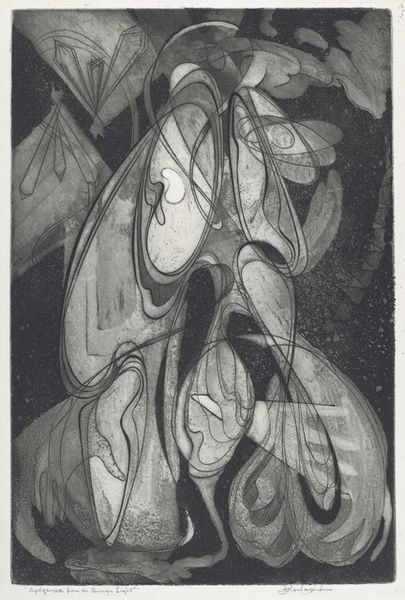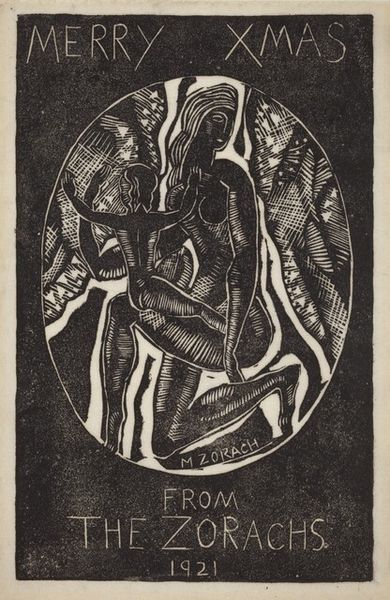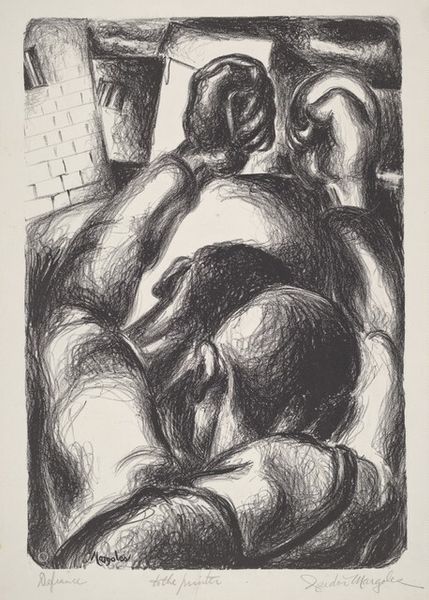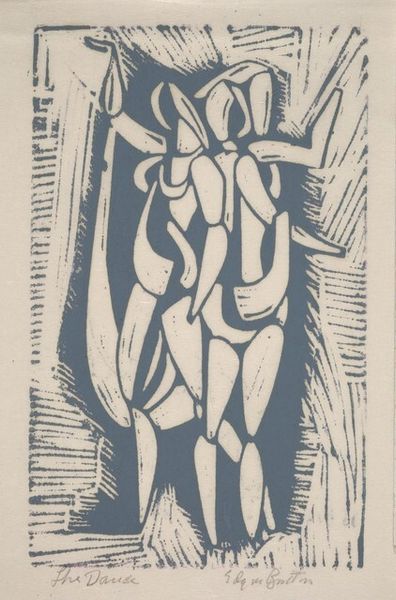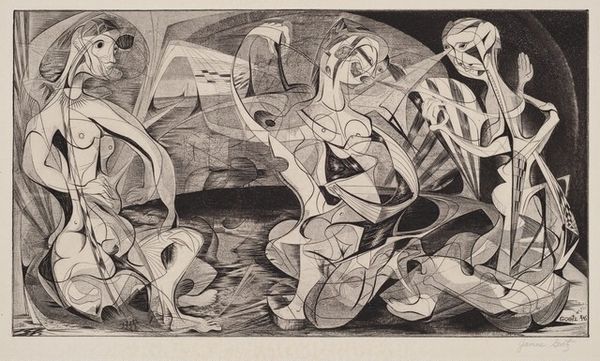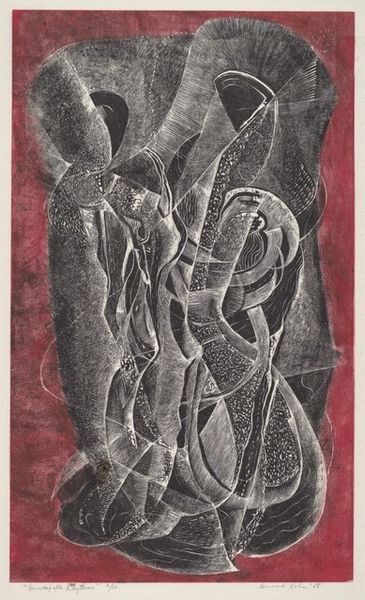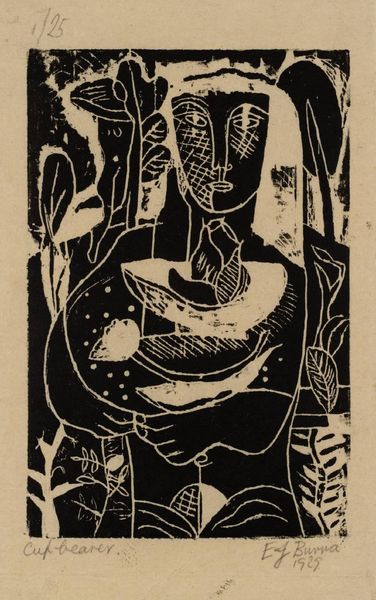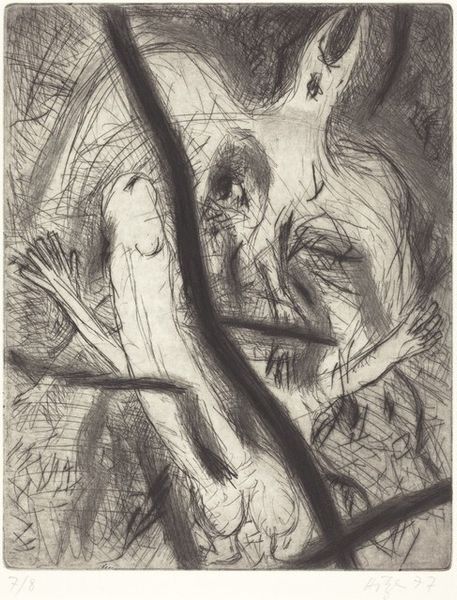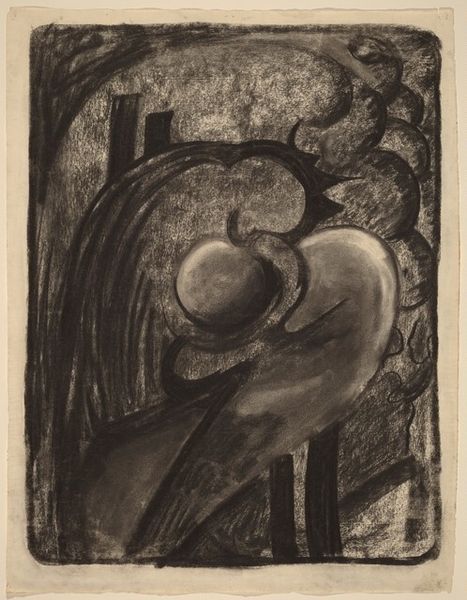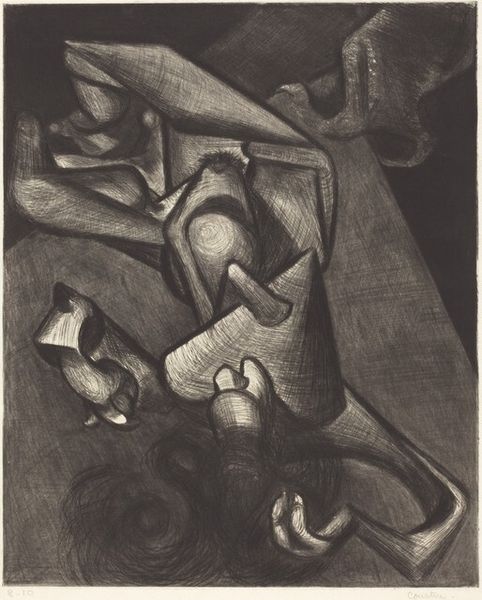
print, etching
#
abstract-expressionism
# print
#
etching
#
form
#
abstraction
#
line
Dimensions: image: 248 x 152 mm sheet: 330 x 248 mm
Copyright: National Gallery of Art: CC0 1.0
Curator: Sue Fuller created this print, titled "Rumor," in 1944. It's an etching, characterized by a compelling use of line and form. Editor: My first impression is one of chaos and whispers. The lines are frantic, creating an unsettling sense of overheard conversations, of secrets being passed along in hushed tones. It’s busy. Curator: Given the historical context—the midst of World War II—one can imagine "Rumor" acting as a visual metaphor for the anxieties and uncertainties that permeated everyday life. How might it connect to the institutional dynamics of information control at that time? Editor: Absolutely. During wartime, rumors aren't just idle gossip. They are a symptom of suppressed truths, anxieties about the unknown. Consider the intersections of gender and labor during this period—how women entered the workforce and navigated public and private life. How did rumor impact those experiences? It’s worth thinking about the representation of femininity here in a chaotic manner that would reflect an experience of an upended and stressful daily life. Curator: Fuller's exploration of abstraction aligns with other artists grappling with representing the intangible and invisible, a shift away from more traditional figuration after periods of representational stability in war art. We see her actively working against conservative conventions, exploring interior landscapes rather than heroic or patriotic themes, as well. Editor: I see how the lack of a clear focal point enhances the idea of a pervasive, all-encompassing narrative, and notice how its visual busyness makes the experience for the viewer an uneasy one. But looking at it from an intersectional point of view, the piece feels very much like the lived female experience where work/life boundaries can blur quite a bit. Fuller provides here a space that transcends beyond class differences that are normally discussed regarding wartime, providing something new to consider. Curator: It prompts reflection on the ways in which societal upheavals manifest within the artistic sphere. Editor: Absolutely. "Rumor" goes beyond its immediate historical context and raises poignant questions about communication, truth, and the impact of collective anxiety on individual experiences across time. It speaks directly to issues still very relevant today. It has this timeless resonance in a manner that very few wartime era works share. Curator: A powerful reflection indeed. It’s fascinating how the anxieties embedded in wartime echoes through Fuller’s abstract language to provide enduring resonance in how we think about information. Editor: I concur. "Rumor" challenges us to question the narratives we consume and consider the forces shaping our perceptions.
Comments
No comments
Be the first to comment and join the conversation on the ultimate creative platform.

